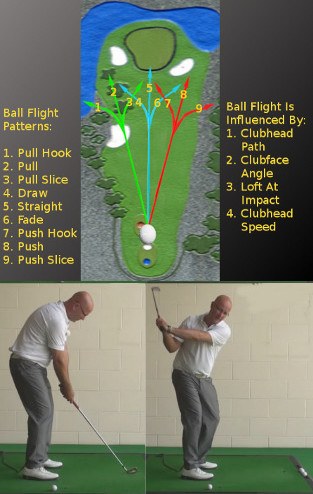1 of 5 | Next >
Solving the Puzzle of Pulled Golf Shots Part 1

Every golfer knows the feeling of picking out the right club, selecting a target, making what feels like a perfect swing – only to look up and see the ball has been pulled way left of the target (or way right for a left handed player).
What happened? How could a swing that felt so good have produced a shot that went so far off line? Pulled golf shots are a common problem that plague players of all skills levels from beginners to accomplished competitive golfers. Since they can sail so far off line so quickly, fixing your pull should be near the top of your golf priority list.
In general, there are two kinds of pulled golf shots that you need to deal with – the straight pull, and the pull hook. Both of these shots can be damaging to your score, but the pull hook is particularly troubling because the ball starts off line, and then continues to turn even farther away from the target. If you hit a pull hook off the tee, for example, there is a good chance that you won’t find that golf ball. If you do, don’t expect to have a very good shot at the green.
Pulled golf shots can sneak into your game at any point along the way, and for any shot during a round. Whether you are hitting a tee shot on a long par five, or just a simple wedge approach shot into the green, your technique always needs to be solid in order to avoid the dreaded pull. The good news is that it is relatively simple to avoid the mistake of pulling golf ball left, as long as you know what swing errors cause this shot in the first place. It doesn’t matter if you are hitting a golf pull hook or just a straight pull, knowing what causes a pulled golf shot is the first step in solving the problem.
Before you should worry about how to stop pulling golf shots, you need to make sure that you are actually pulling the golf ball in the first place. While that might seem like an obvious thing to figure out, it isn’t as simple as it might appear. Many golfers mistakenly think they are pulling the ball off-line, when in fact they are just aiming incorrectly to begin with. To confirm that you are dealing with a pull and not just poor alignment, practice your aim on the driving range carefully. You should be able to reliably aim at your target prior to each and every shot. If possible, have a friend help you to double check your aim. Once you know that you are in fact aimed correctly and your shots are still flying off line, it is a safe bet that you are dealing with a pull.
Note: All of the instruction contained in this article is based on a right handed golfer. For those of you who play left handed, simply reverse the directions.






